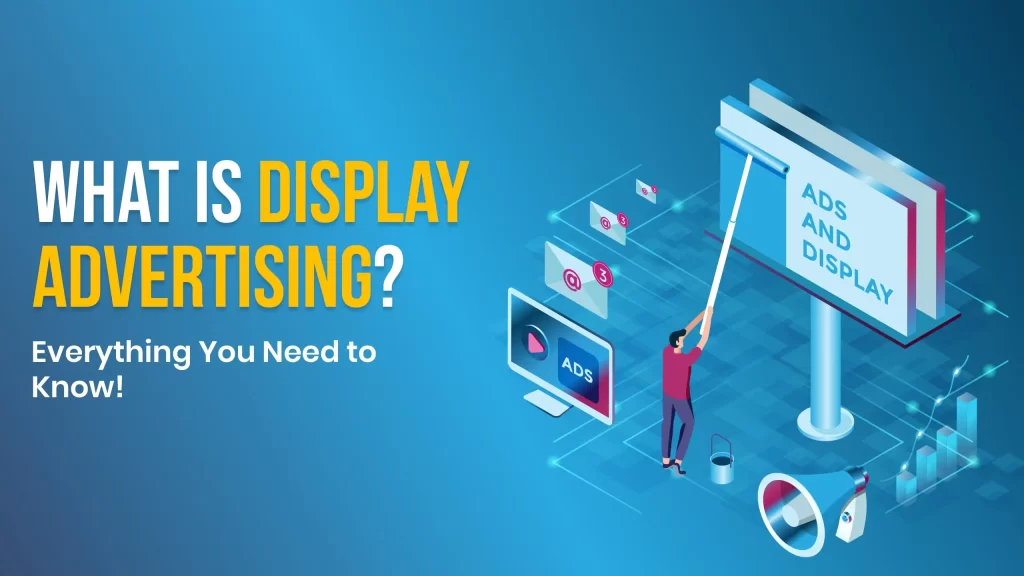In the fast-paced digital landscape, where competition for attention is fierce, businesses are constantly seeking effective ways to stand out. Enter display advertising, a powerful tool that has revolutionized the way brands connect with their target audience online.
Understanding Display Advertising
Display advertising refers to the visual ads that appear on websites, apps, or social media platforms. Unlike search ads, which are text-based and appear in search engine results, display ads are graphic-based, employing images, videos, and interactive elements to capture the viewer’s attention.
How Does Google Display Ads Work?
The mechanics behind display advertising involve a network of advertisers, publishers, and ad exchanges. Advertisers create visually appealing ads, which are then displayed on publisher websites or apps. Ad exchanges act as intermediaries, connecting advertisers with available ad space on publishers’ platforms through real-time bidding.
Types of Display Ads
1. Banner Ads: Rectangular graphics that appear at the top, bottom, or sides of a webpage.
2. Interstitial Ads: Full-screen ads that appear before or after the expected content.
3. Video Ads: Engaging video content that plays within a designated space on a webpage.
4. Native Ads: Blend seamlessly with the content of the website, providing a more natural user experience.
5. Rich Media Ads: Interactive ads that can include elements like audio, video, and clickable elements.
Benefits of Display Ads
1. Increased Brand Visibility:
Display ads offer a visually compelling way to showcase your brand, products, or services, increasing overall visibility.
2. Targeted Advertising:
Through the use of audience targeting options, display ads can be tailored to reach specific demographics, interests, or online behaviors.
3. Enhanced Engagement:
The visual appeal and interactive nature of display ads make them more engaging, fostering a stronger connection with the audience.
4. Remarketing Opportunities:
Display advertising allows for remarketing strategies, enabling businesses to reconnect with users who have previously visited their website.
5. Measurable Results:
Display advertising platforms provide comprehensive analytics, allowing advertisers to track the performance of their campaigns in real-time.
Display Ads vs. Search Ads
While both display and search advertising aim to promote products or services online, they serve different purposes in the marketing funnel.
Intent:
- Display Advertising: Targets users who may not be actively searching for a product or service but are likely to be interested based on their online behavior.
- Search Advertising: Targets users actively searching for specific products or services.
Format:
- Display Advertising: Relies on visual elements such as images, videos, and interactive content.
- Search Advertising: Primarily text-based, appearing within search engine results.
Placement:
- Display Advertising: Appears on websites, apps, and social media platforms.
- Search Advertising: Appears in search engine results pages.
Best Practices for Effective Google Display Ads
1. Compelling Visuals:
Craft visually appealing ads that resonate with your brand and capture the audience’s attention.
2. Clear Call-to-Action (CTA):
Include a clear and concise CTA to guide users on the desired action, whether it’s making a purchase or signing up for a newsletter.
3. Audience Targeting:
Leverage audience targeting options to reach the right people based on demographics, interests, and online behavior.
4. Mobile Optimization:
Ensure that your display ads are optimized for mobile devices, as a significant portion of internet users access content through smartphones and tablets.
5. A/B Testing:
Experiment with different ad creatives, copy, and targeting options through A/B testing to identify what resonates best with your audience.
The Future of Google Display Ads
As technology continues to advance, display advertising is evolving to provide even more personalized and immersive experiences for users. Emerging technologies such as augmented reality (AR) and virtual reality (VR) are being integrated into display ads, offering a new dimension of engagement.
Conclusion
Google Display ads has become an integral part of the digital marketing landscape, offering businesses a dynamic and visually compelling way to connect with their audience. By understanding its mechanics, benefits, and best practices, businesses can harness the power of display ads to enhance brand visibility, engage their audience, and drive measurable results in the competitive online space. As technology continues to evolve, the future of display advertising holds exciting possibilities, paving the way for more innovative and immersive marketing experiences.










